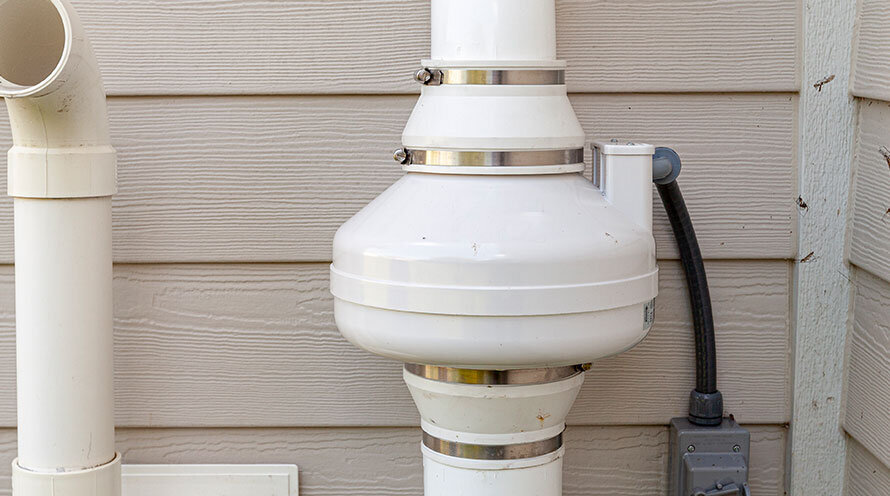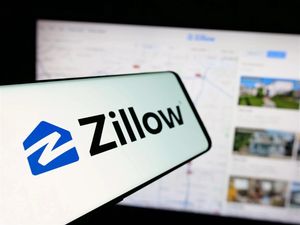
At Colorado Hazard Control, we understand the value of a safe and healthy home, school, and other large structures. As a family-owned and operated business serving the Front Range and beyond, we’re committed to protecting families just like ours from hidden environmental hazards.
One of the most serious yet least visible threats to your home's air quality is radon gas. Fortunately, radon mitigation systems can effectively reduce this risk. In this article, we’ll explain what radon is, why it’s a concern for homeowners, how radon mitigation systems work, and what to expect during a radon system install.
What Is Radon?
Radon is a naturally occurring radioactive gas produced from the decay of uranium in soil and rock. It’s colorless, odorless, and tasteless, which means it can only be detected with specialized equipment. Radon gas can seep into homes through cracks in foundations, gaps in flooring, or through well water. Once inside, it can accumulate to dangerous levels, especially in basements and lower levels.
The Environmental Protection Agency (EPA) classifies radon as a Group A carcinogen, meaning it is known to cause cancer in humans. Radon is the second leading cause of lung cancer in the U.S., behind smoking. According to the Colorado Department of Public Health & Environment, about half of all homes in Colorado have radon levels above the EPA’s recommended action level of 4.0 picocuries per liter (pCi/L).
Consequently, installing a radon reduction system should be a priority in any home that has radon but isn’t currently mitigating it.
Radon Mitigation System Installation Is Critical in Colorado
Colorado's unique geology makes it especially prone to elevated radon levels. Our soil contains significant uranium deposits that naturally break down into radon gas. Just like older homes with basements, even well-sealed homes, newer homes, or homes built on slabs can be affected. Radon is found throughout Colorado, from mountain towns to city neighborhoods.
In addition, Colorado’s colder climate means people spend more time indoors, and our homes are sealed tightly for energy efficiency. This can trap radon inside, increasing the risk of exposure. Testing for radon is more than a precaution. It’s an essential step in protecting your family's health. If elevated levels are found, a professional radon system installation is the next step.
Radon Mitigation for Homeowners: Understanding How Systems Work
A radon mitigation system lowers radon in your home to safer levels. The most common type of system is called sub-slab depressurization. This radon mitigation system processes the gas using a fan and a network of pipes to create suction under the home’s foundation, pulling the gas from beneath the house and venting it above the roofline, where it disperses safely into the atmosphere.
There are also systems for crawlspaces and other home configurations. The best system for your home depends on the structure and source of the radon. Colorado Hazard Control will help you determine the right radon mitigation steps and solution.
What To Expect During Installation
Colorado Hazard Control has deep expertise when it comes to radon systems for Colorado homes. When you contact us, our certified professionals explain the cost of radon mitigation systems in Colorado and walk you through the entire installation process, which includes:
- Radon Testing
If you haven’t already tested your home for radon, we’ll begin with a professional test. If results are above the EPA’s action level, we’ll recommend mitigation. - Site Evaluation
We evaluate your home’s foundation, construction type, and ventilation systems to determine the most effective mitigation plan. - System Design
Based on the findings, we design a custom mitigation system. Then, we explain the design, answer your questions, and make sure you understand how the system works. - Installation
Regarding the radon mitigation timeline, installation usually takes one day, depending on the size and layout of your home. We install the fan, piping, and venting components with minimal disruption and seal all accessible areas to prevent future radon entry. Before installation, your technician will advise you on moving any items blocking visible foundation or concrete slab cracks so we can seal them. - Post-Installation Testing
Once the radon mitigation system is in place, we conduct a follow-up test to confirm the radon levels in your home have dropped. You will receive a label indicating the pipes are part of a radon mitigation system, along with the installation date. All properly installed systems have an audible alarm to indicate when the system is malfunctioning. Radon systems require very little maintenance. However, if you notice the fan has stopped running, hear the alarm, or you see new cracks in your foundation, please contact us for service.
Benefits of Having a Radon Mitigation System
With an effective radon mitigation system operational in your home, you, your family, and visitors enjoy multiple benefits, including:
- Health protection. Lowering radon levels significantly reduces your risk of developing lung cancer. This is especially important if someone in your home smokes or has a respiratory condition.
- Increased home value. Homes with mitigation systems are more appealing to buyers, especially in areas like Colorado, where radon awareness is high. A properly-installed system already in place can make the sale process smoother.
- Peace of mind. Once we install your radon system, you can breathe easier – literally!
Risks of Not Installing a Radon Mitigation System
Ignoring radon can have serious health consequences. Long-term exposure to high levels increases your risk of lung cancer. This is especially dangerous for children, older adults, and those with compromised immune systems.
Elevated radon can also become a financial issue. If you plan to sell your home, a failed radon test may delay or complicate the sale. Many buyers now expect radon testing and mitigation to be completed on a property before closing.
Your Trusted Partner in Radon Safety
As a family-owned business, Colorado Hazard Control brings a personal approach to every project. We treat your home like it’s our own and take pride in offering honest advice, fair pricing, and expert installation. Working with a licensed, insured, and properly trained company is important. Many companies offering radon mitigation services are not trained, licensed, and insured and often will install a poorly or incorrectly designed system.
Our certified technicians meet or exceed EPA guidelines, and we are committed to helping you protect your home for the long term. That’s why many consider us among the best radon mitigation companies in Colorado. We have installed systems in many Colorado homes, schools, apartments, and universities.
Environmental hazards, such as radon, mold, and lead, can be overwhelming to deal with. We’re here not just to install a system but to guide you through the process and help you create a healthier indoor environment.
Radon Mitigation in Colorado: Take Action Today
Radon may be invisible, but its risks are real. Fortunately, mitigation is effective, affordable, and straightforward. Whether you’re buying a home, living in an older property, or simply want peace of mind, Colorado Hazard Control is here to help.
Contact us today if you have questions about radon mitigation system installation or to request a free site consultation. Let’s make your home a healthier, safer place to live.
About Colorado Hazard Control
Colorado Hazard Control is the natural industrial, commercial and residential environmental solutions provider achieving the highest quality workmanship by focusing intensely on what we do best — health, safety, and environmental compliance. With locations in Denver, Colorado Springs and Pueblo, we offer our services statewide. Whatever your needs - lead abatement, mold remediation, radon mitigation, demolition, or training - we're there with 24-hour emergency response available. https://www.coloradohazard.com
Media Contact:
Lynnelle Beaver, 303-410-4941
Source: Prodigy.press
Release ID: 1600975






